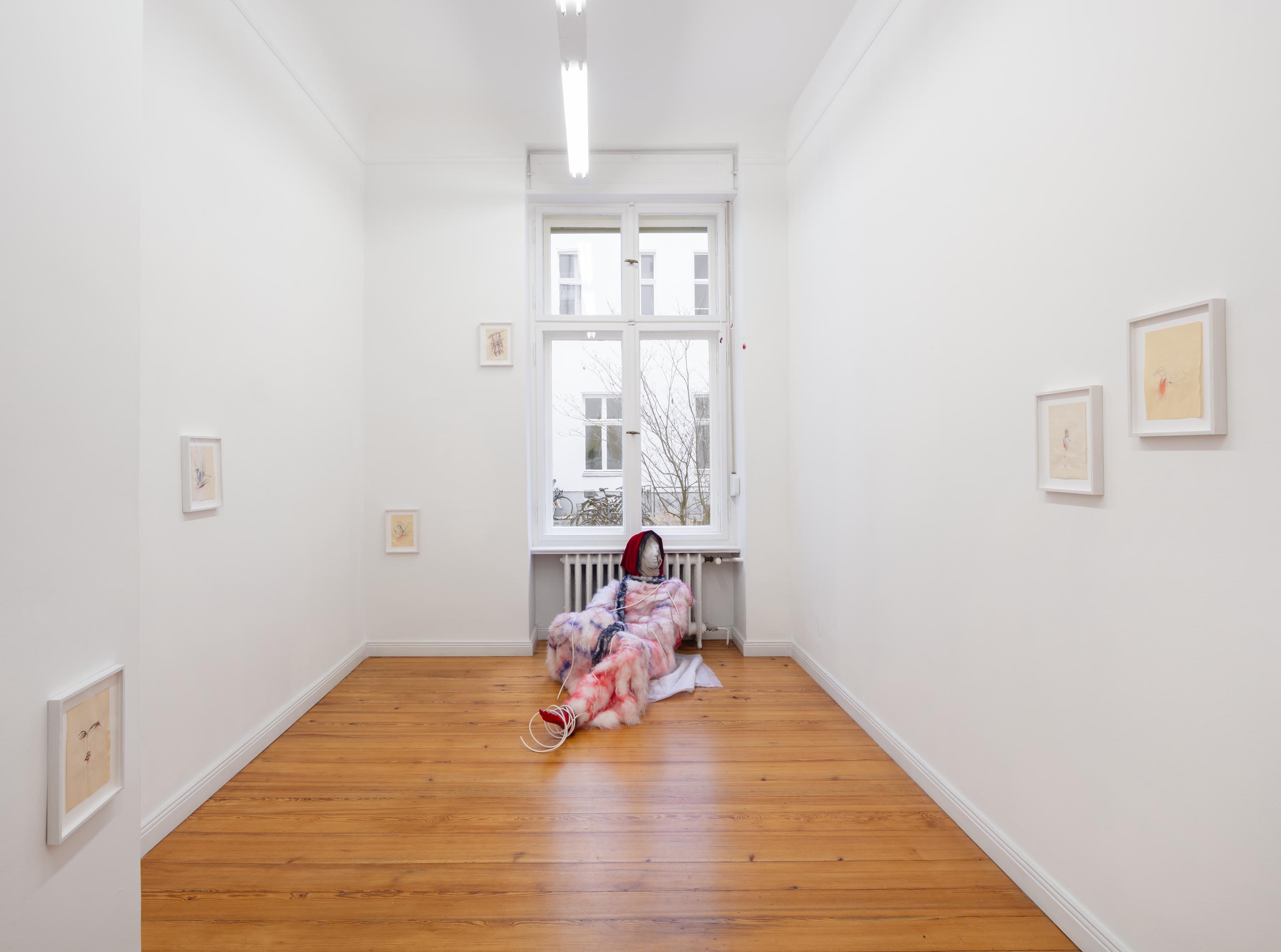
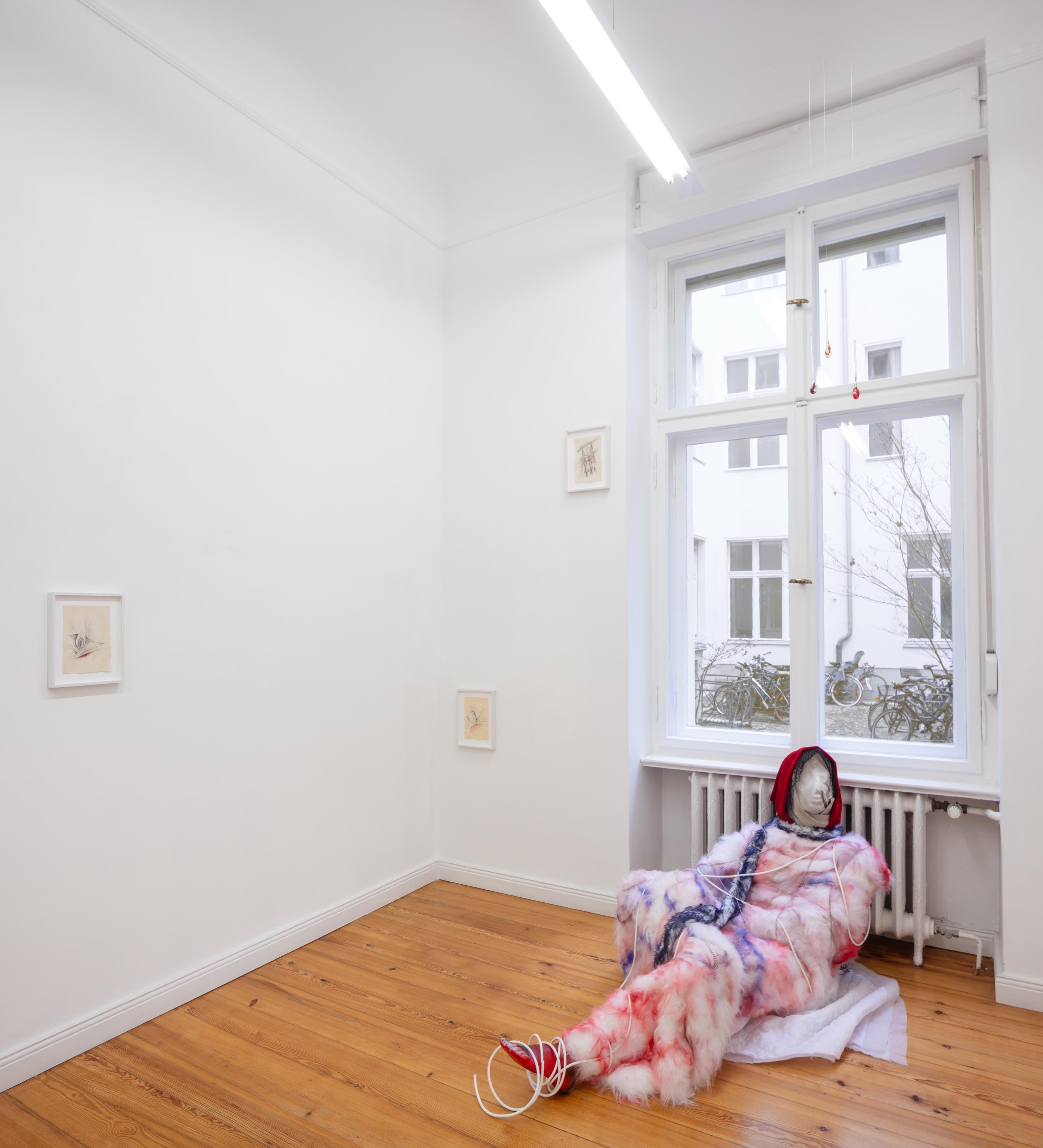
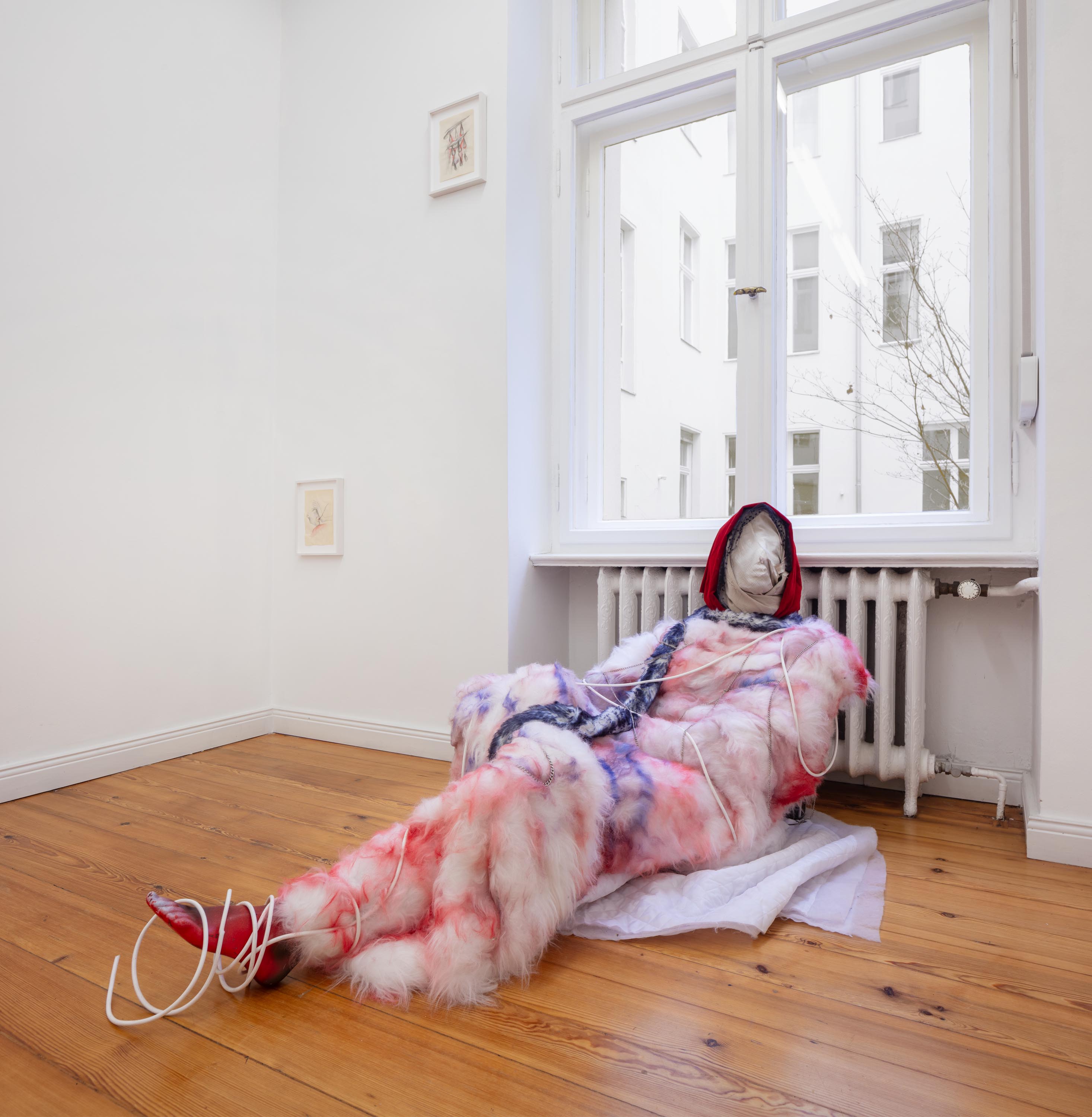
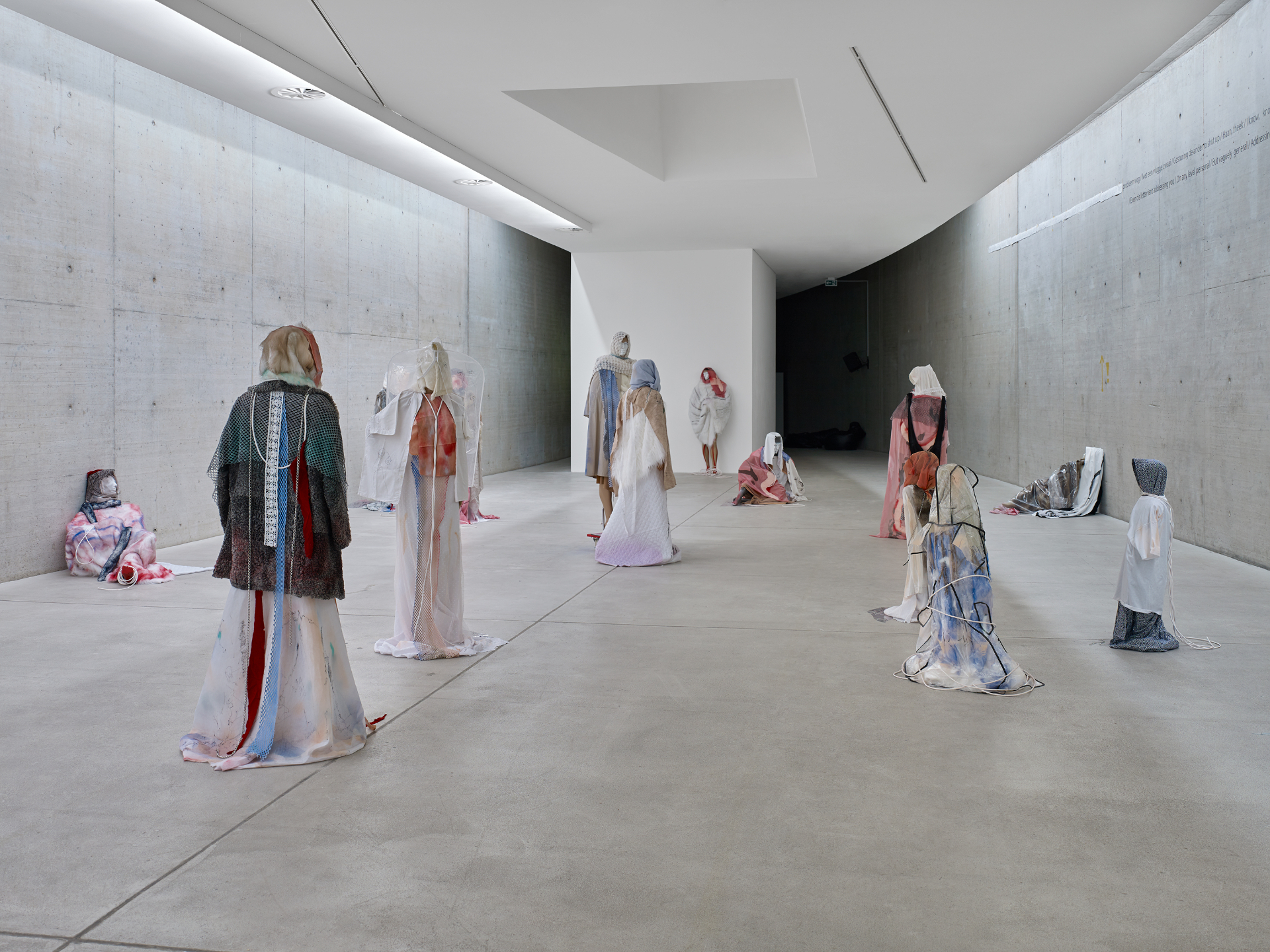
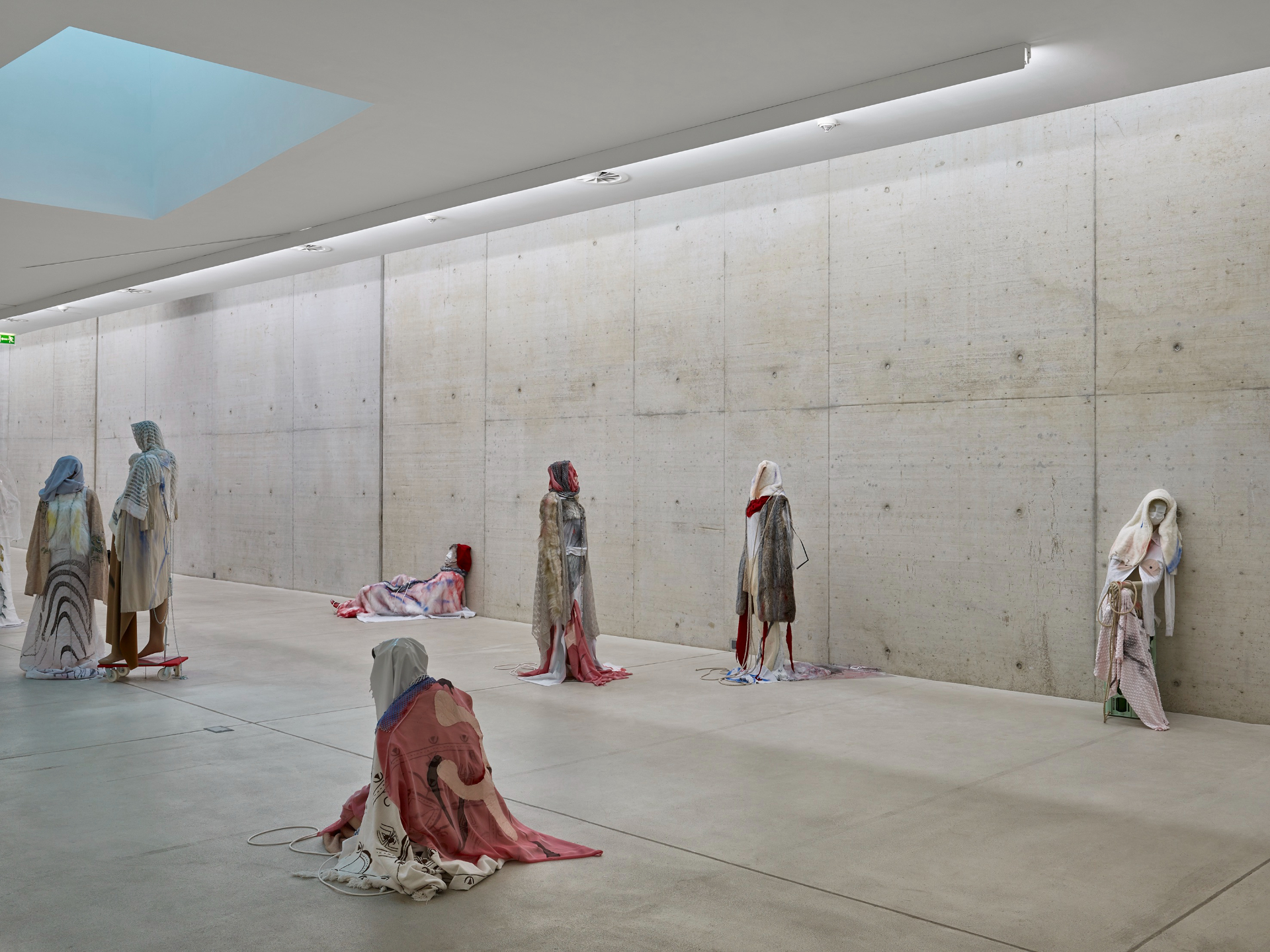
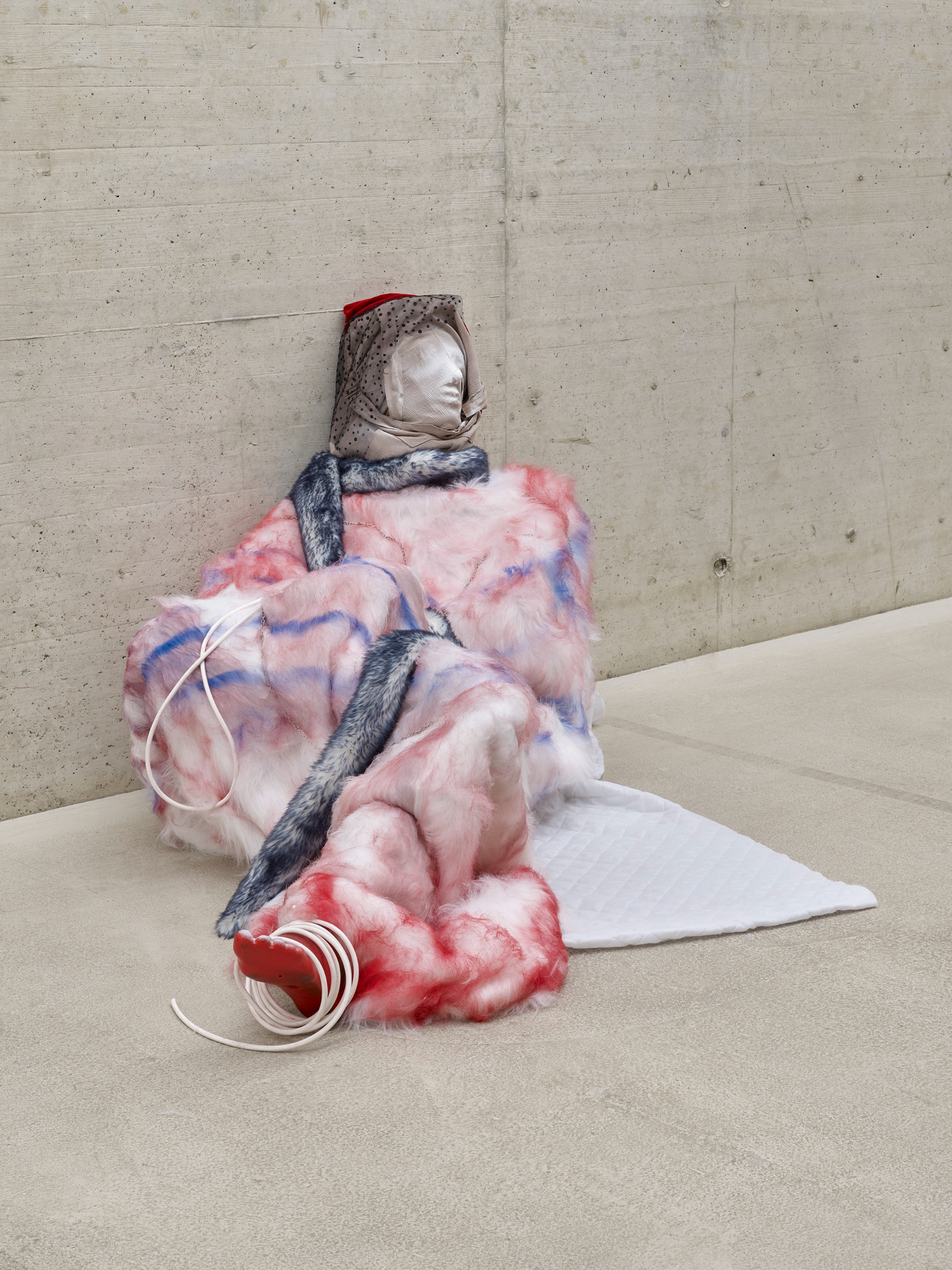
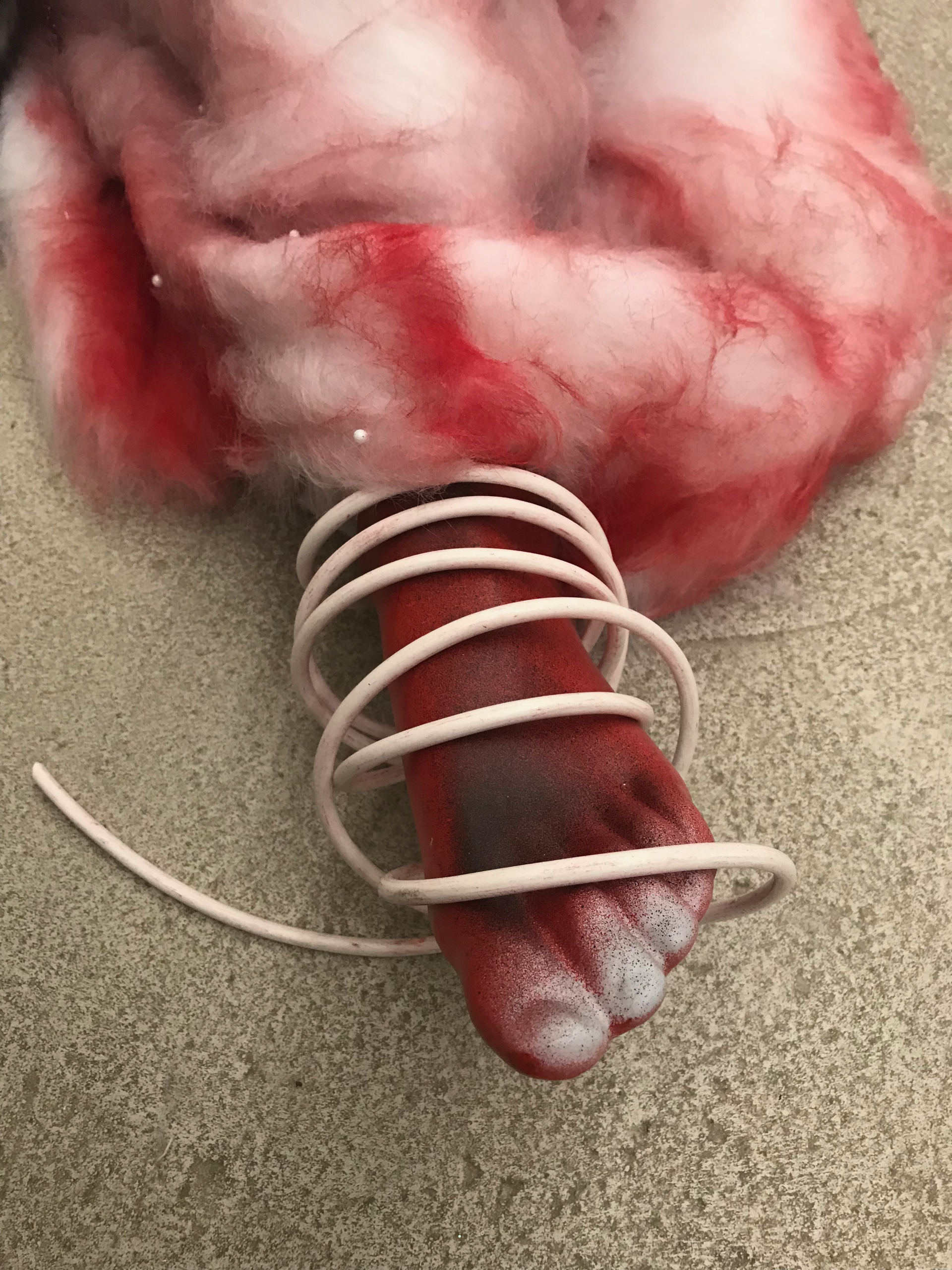
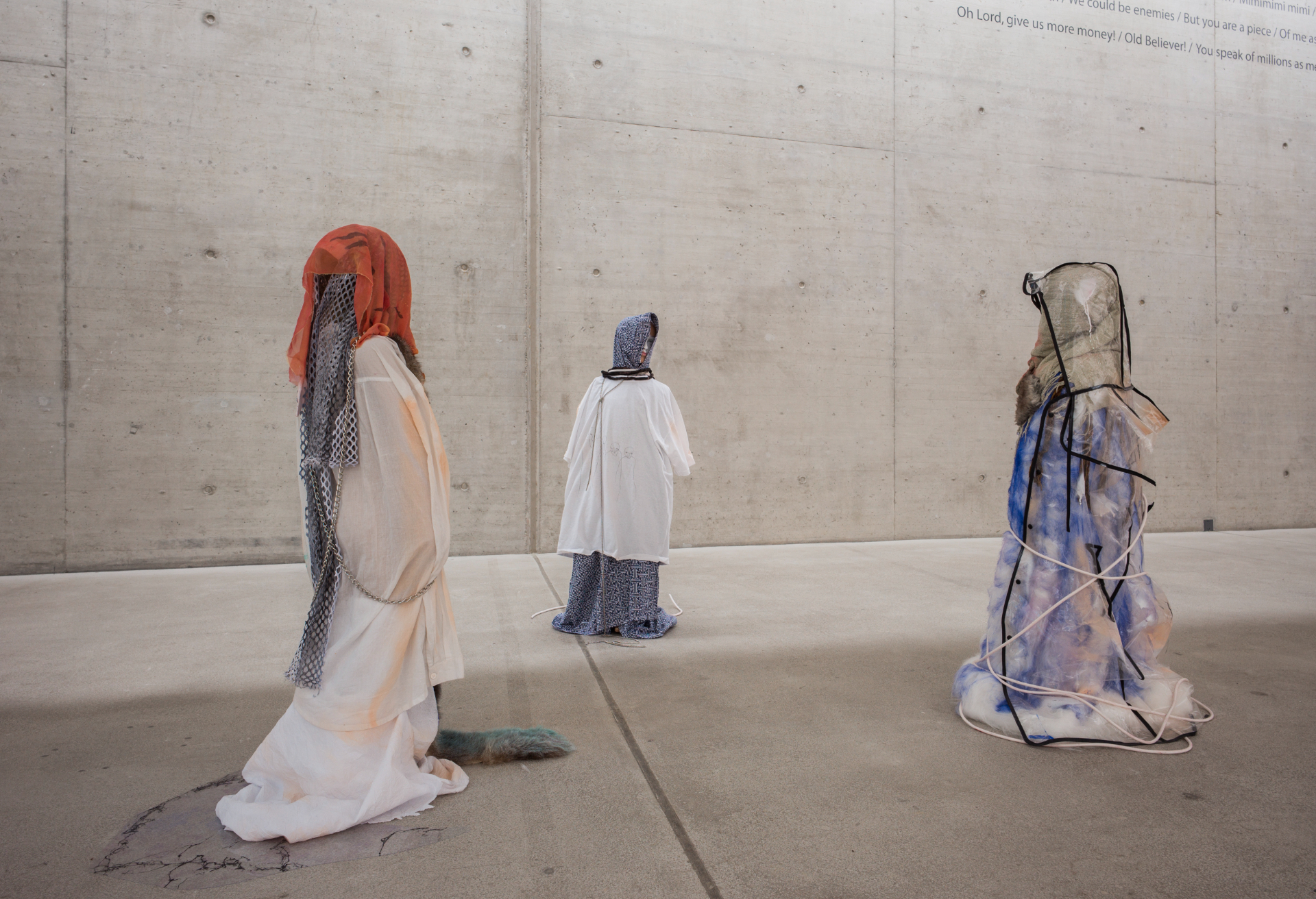
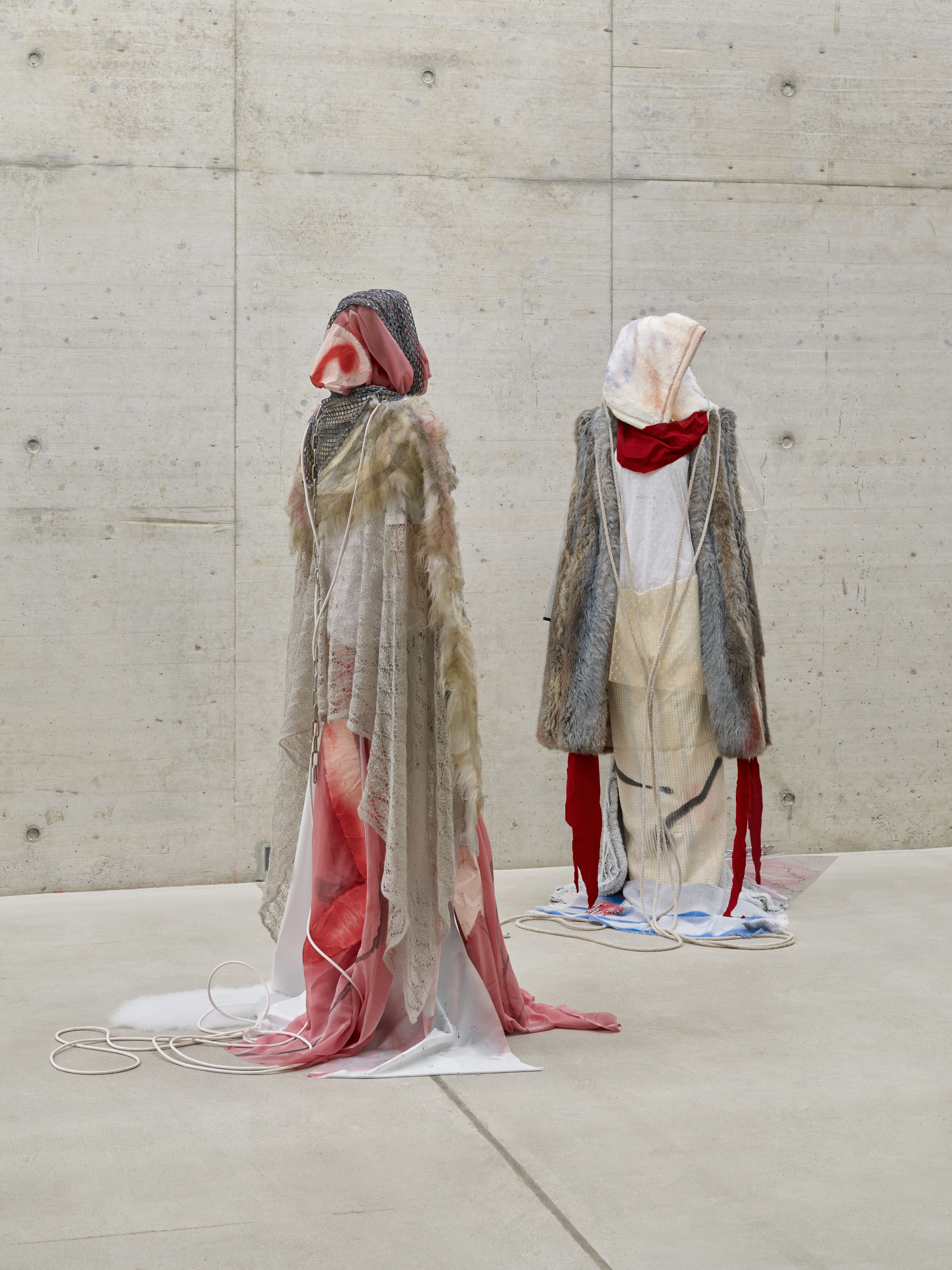
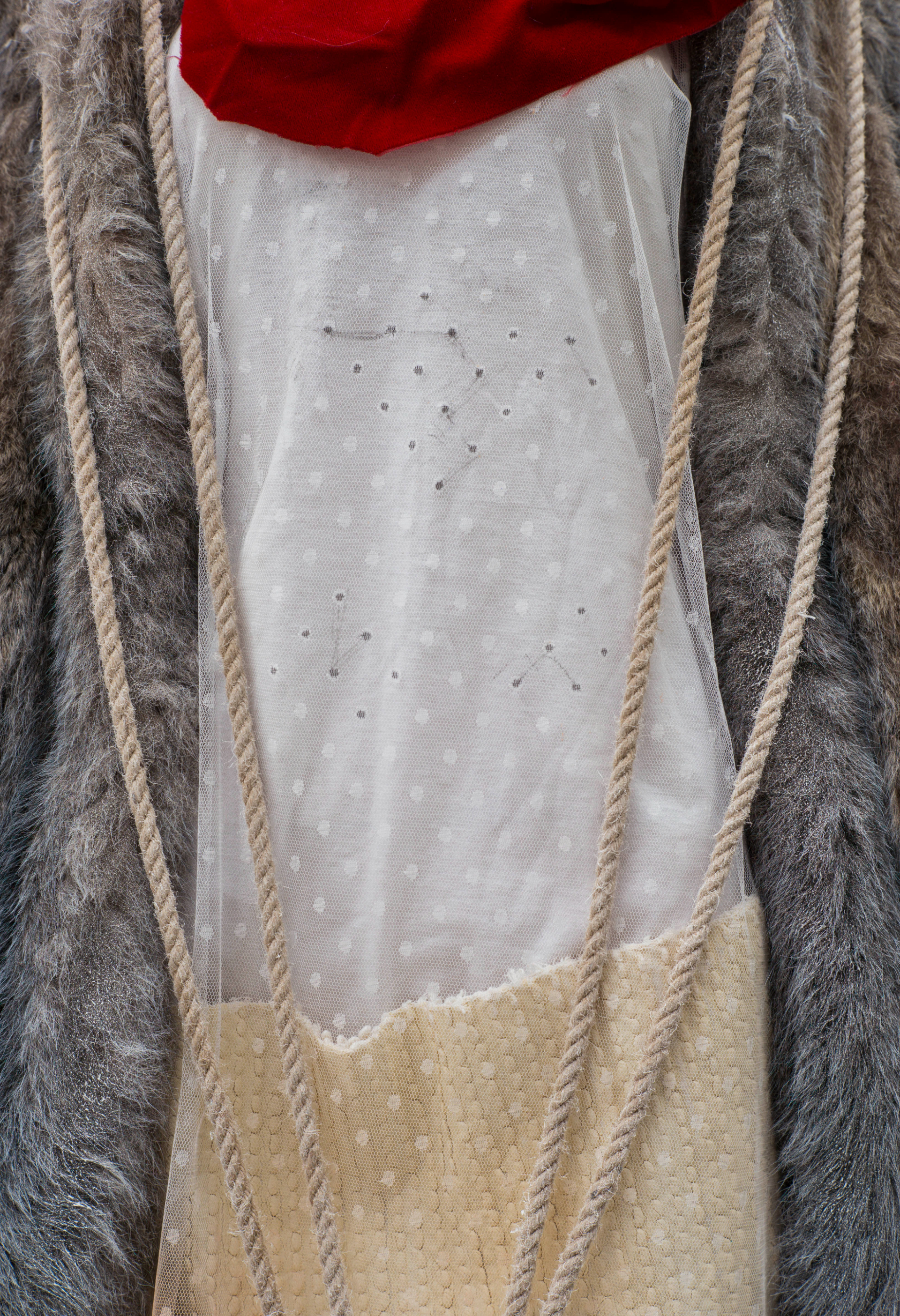
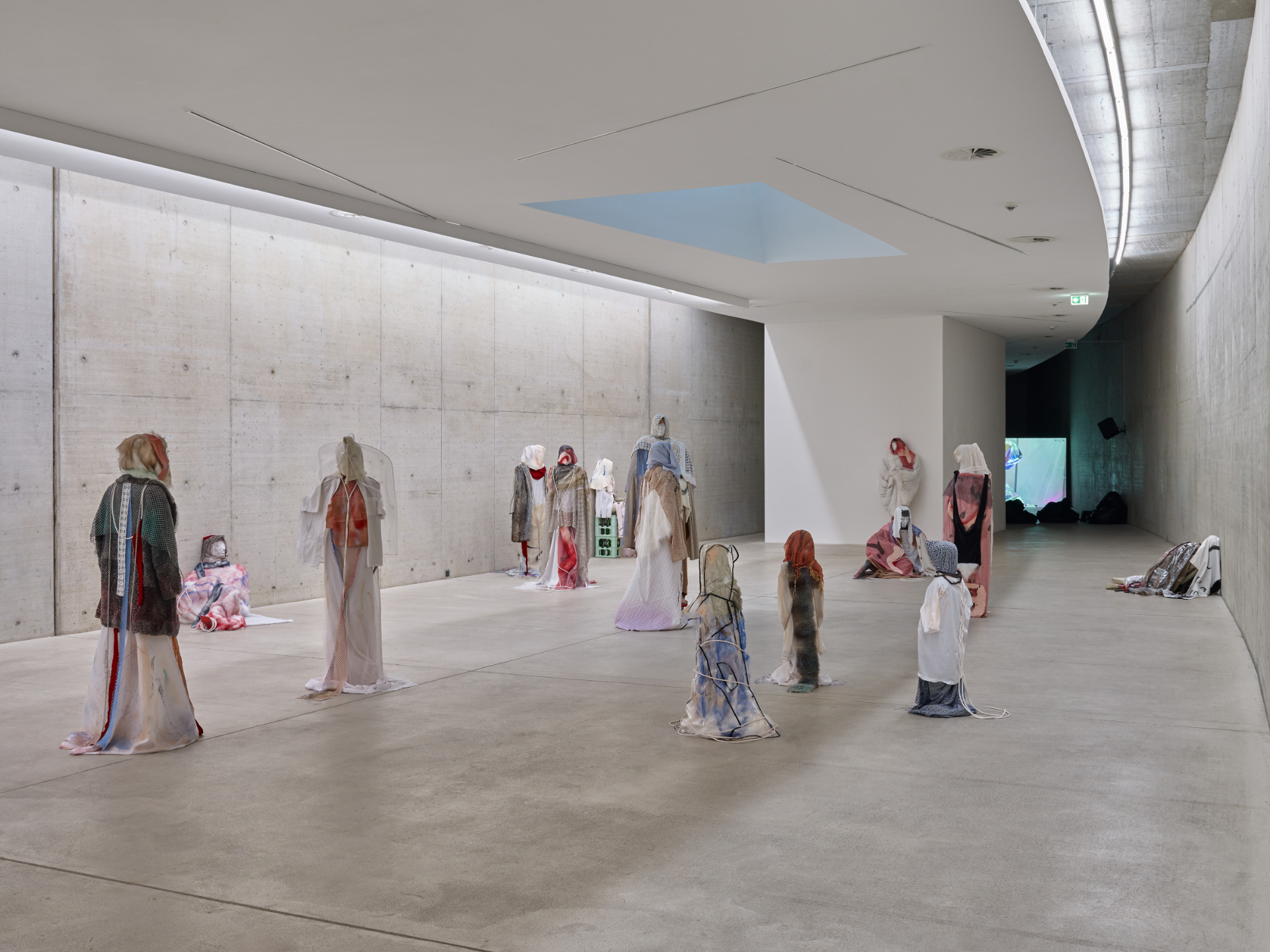
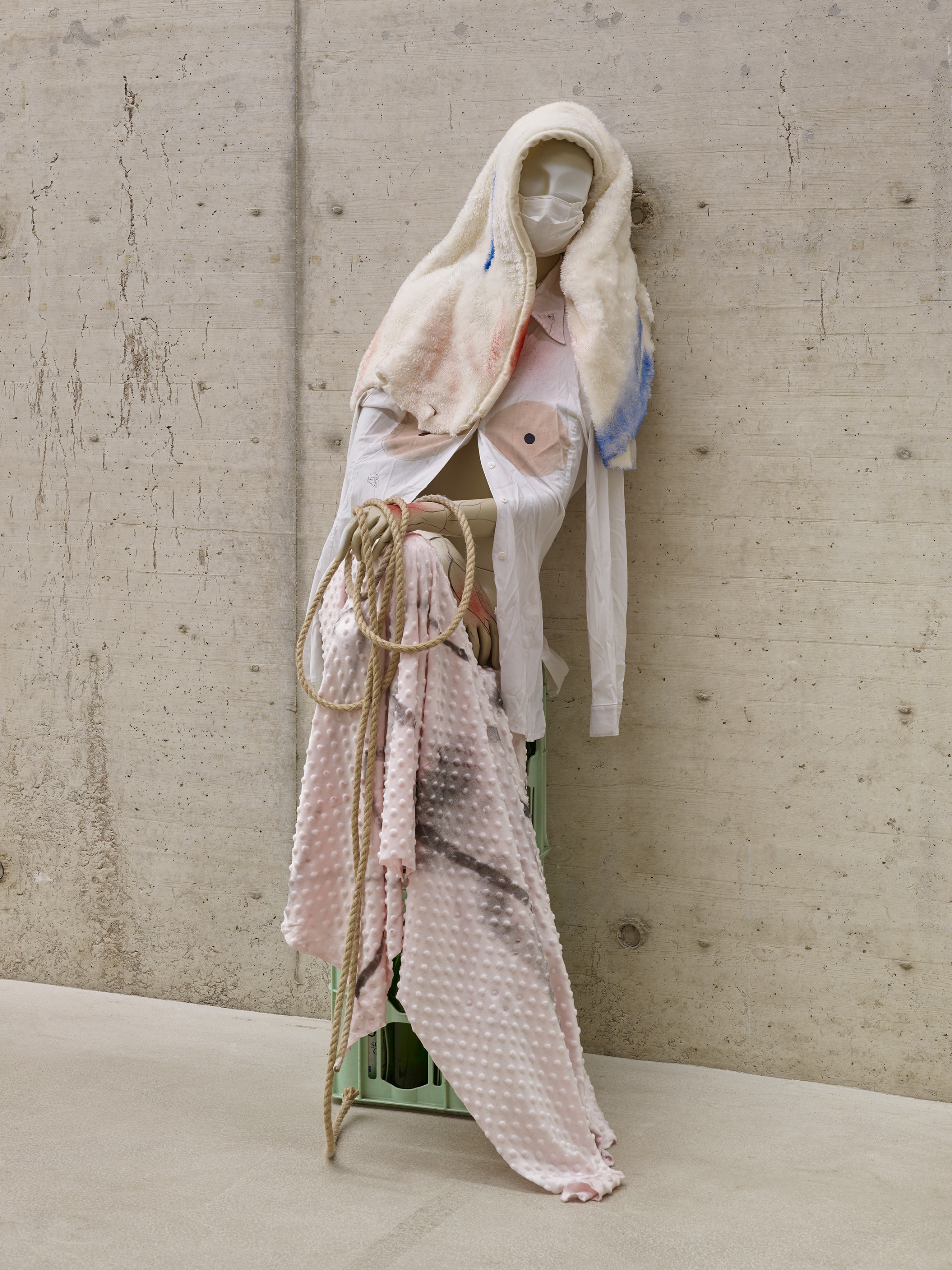
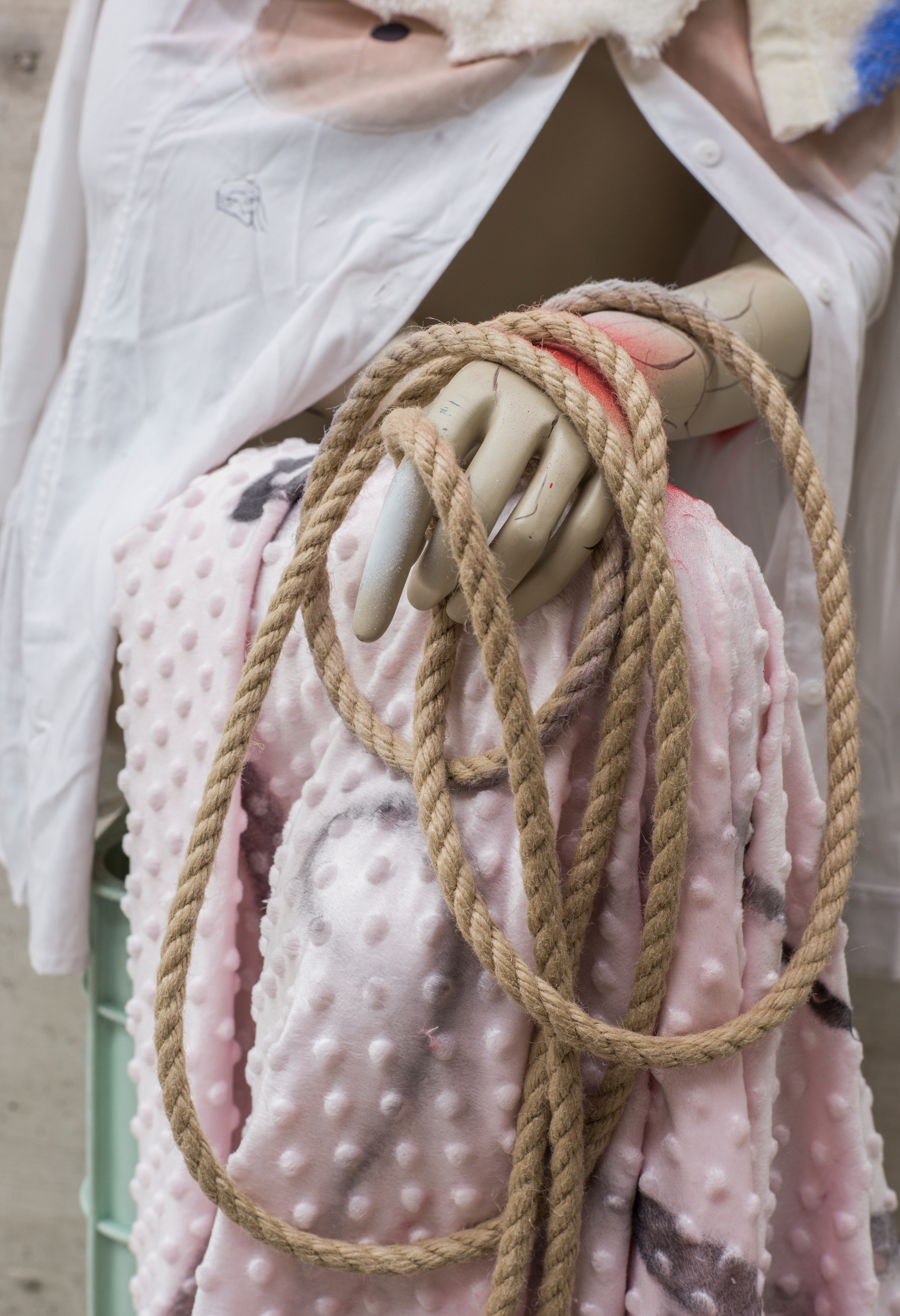
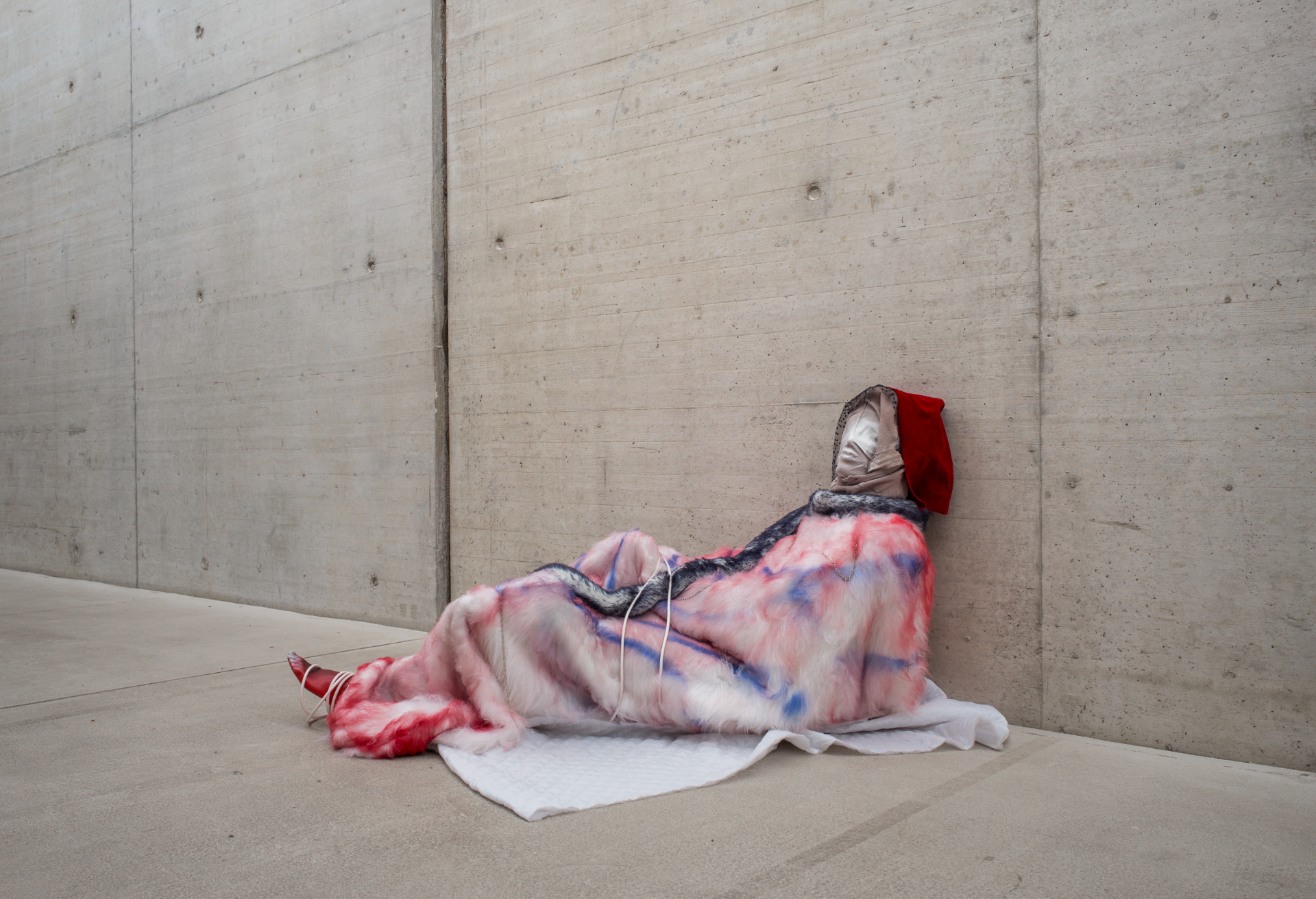
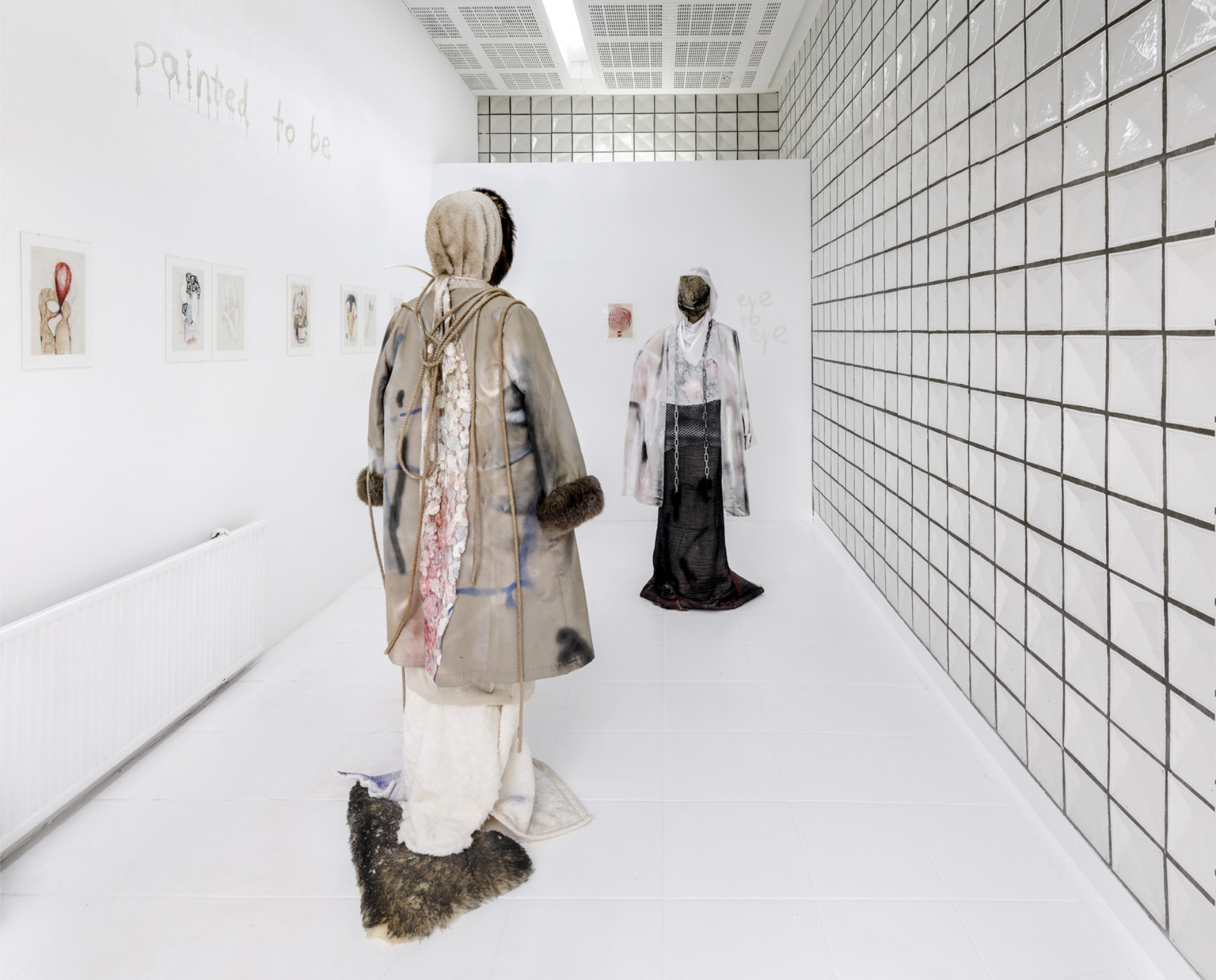
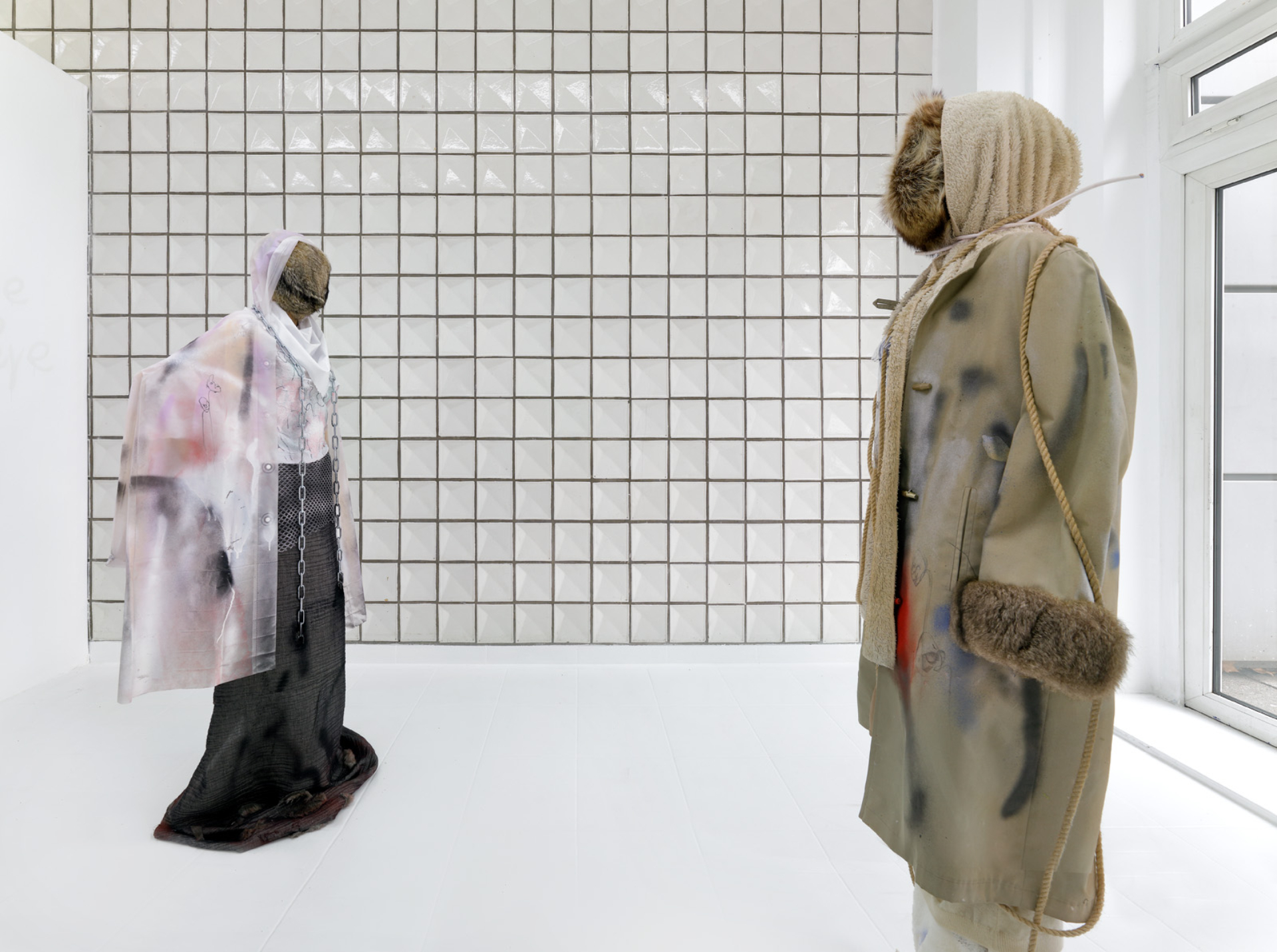
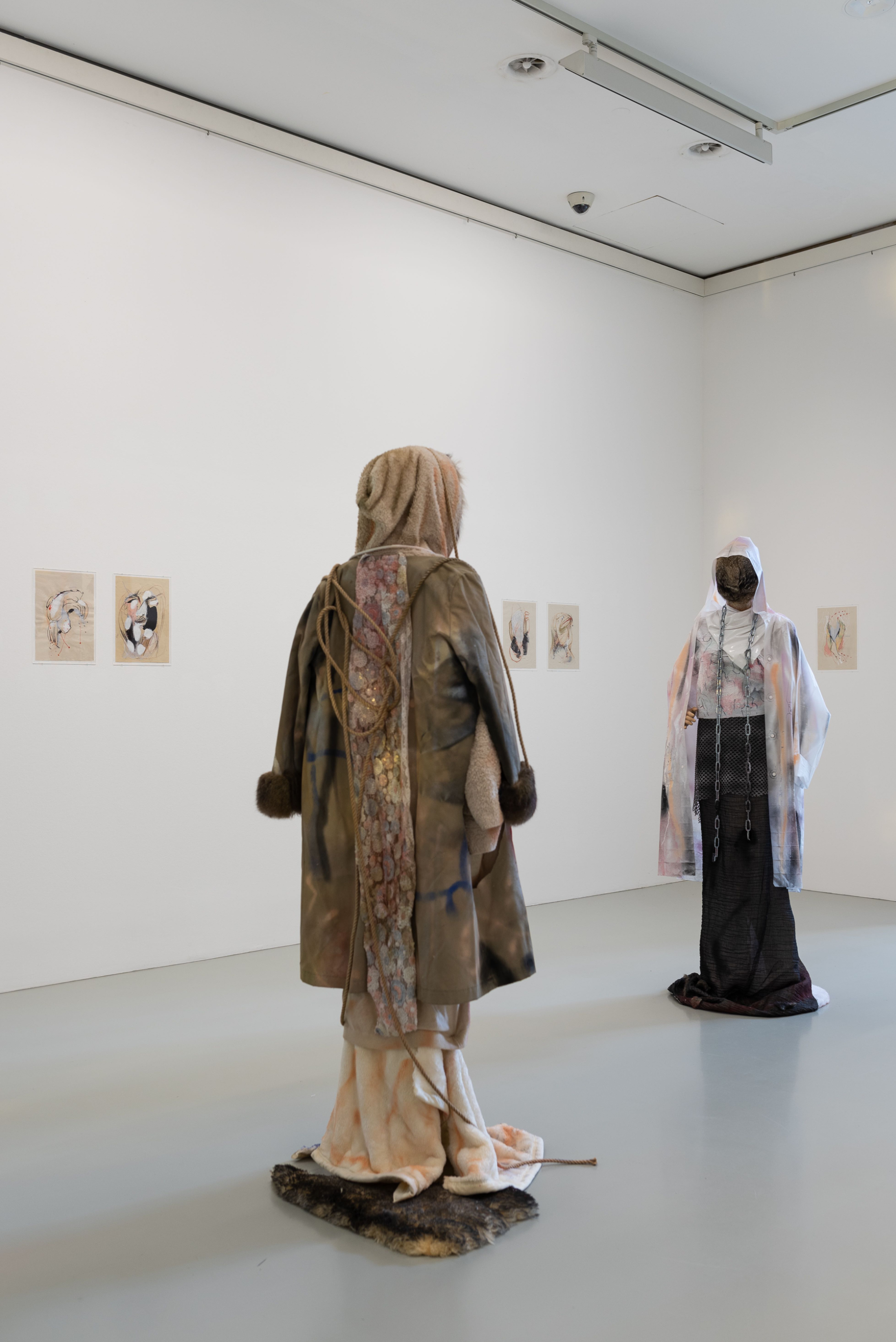
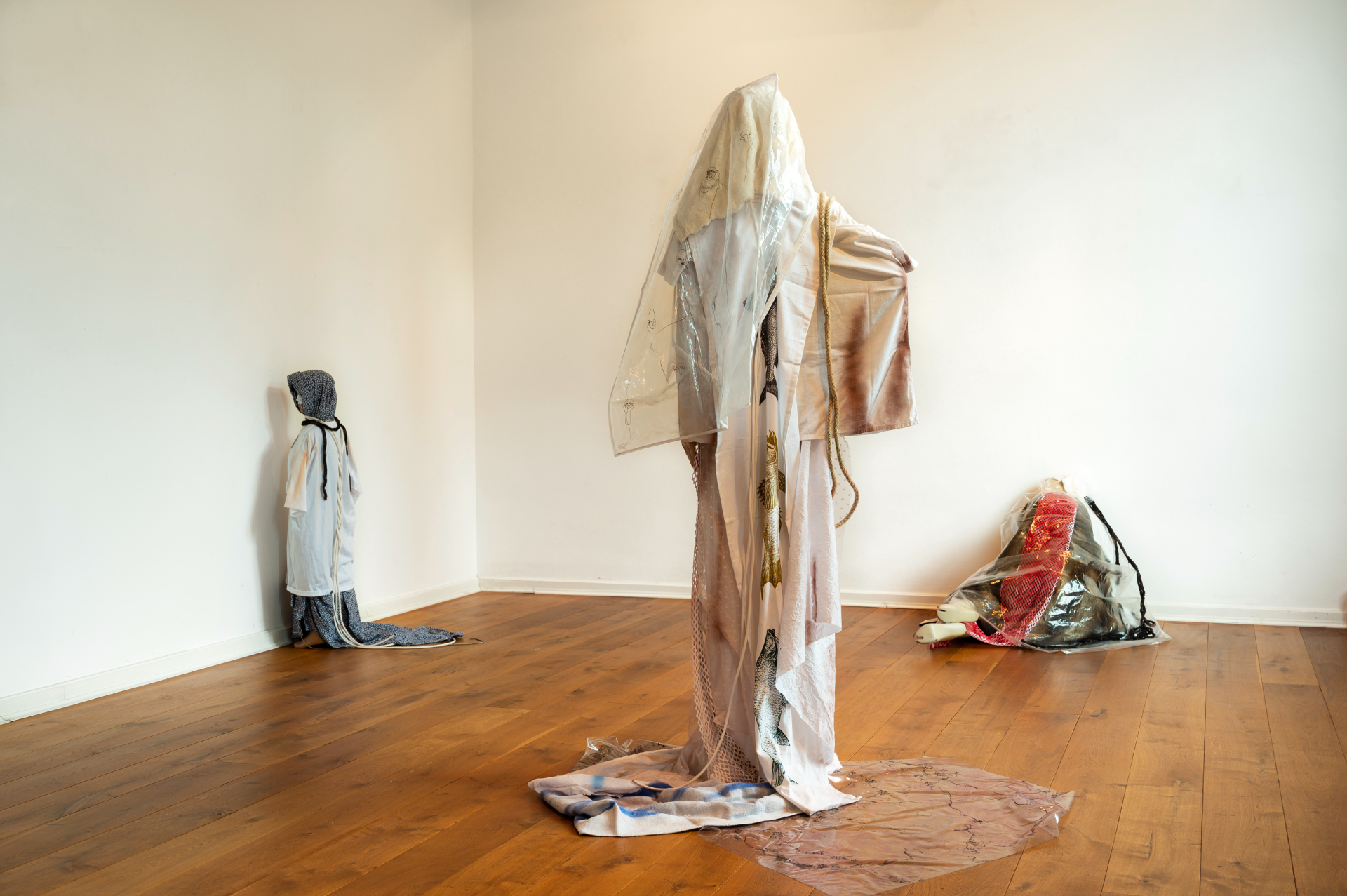
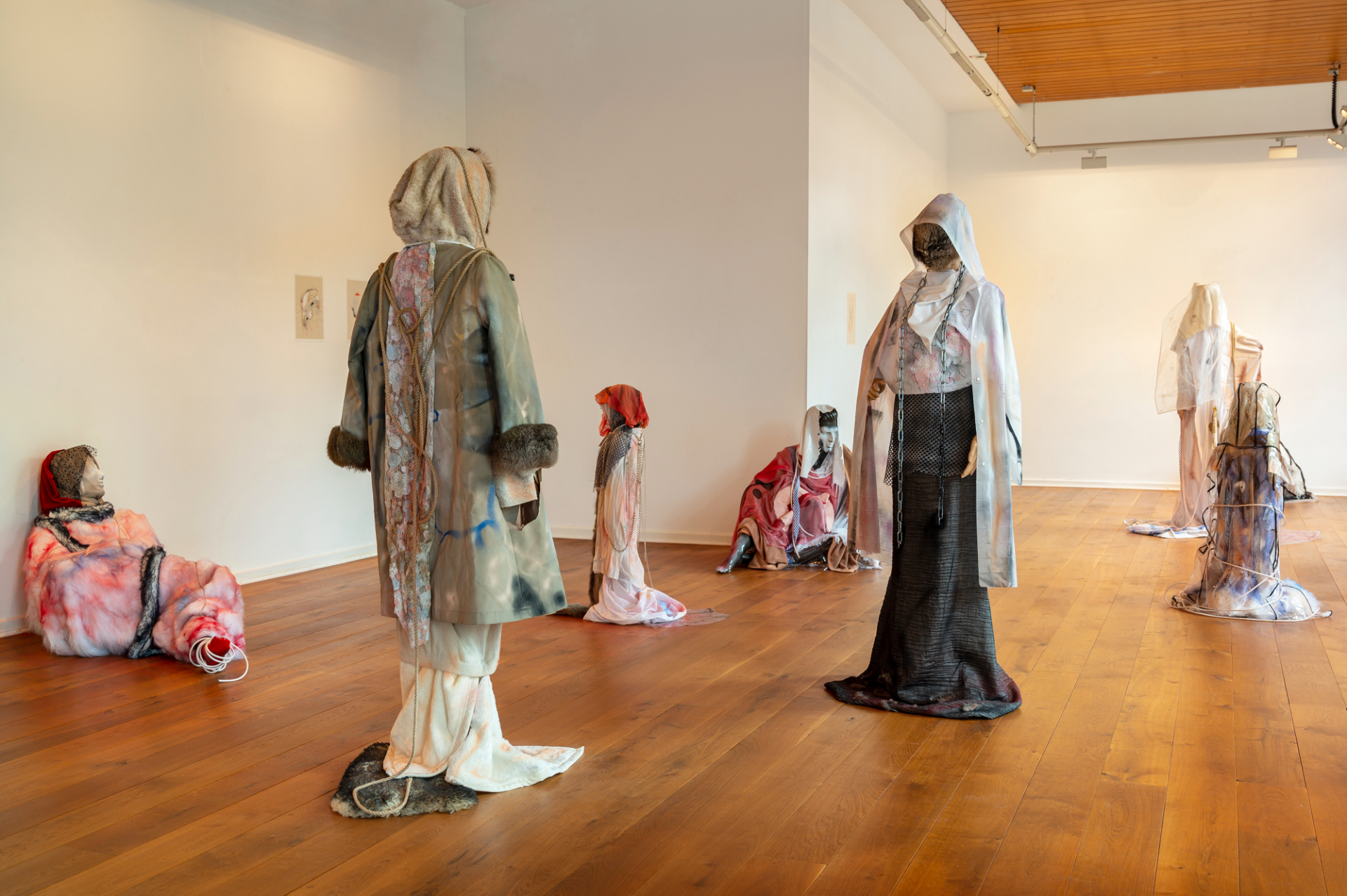
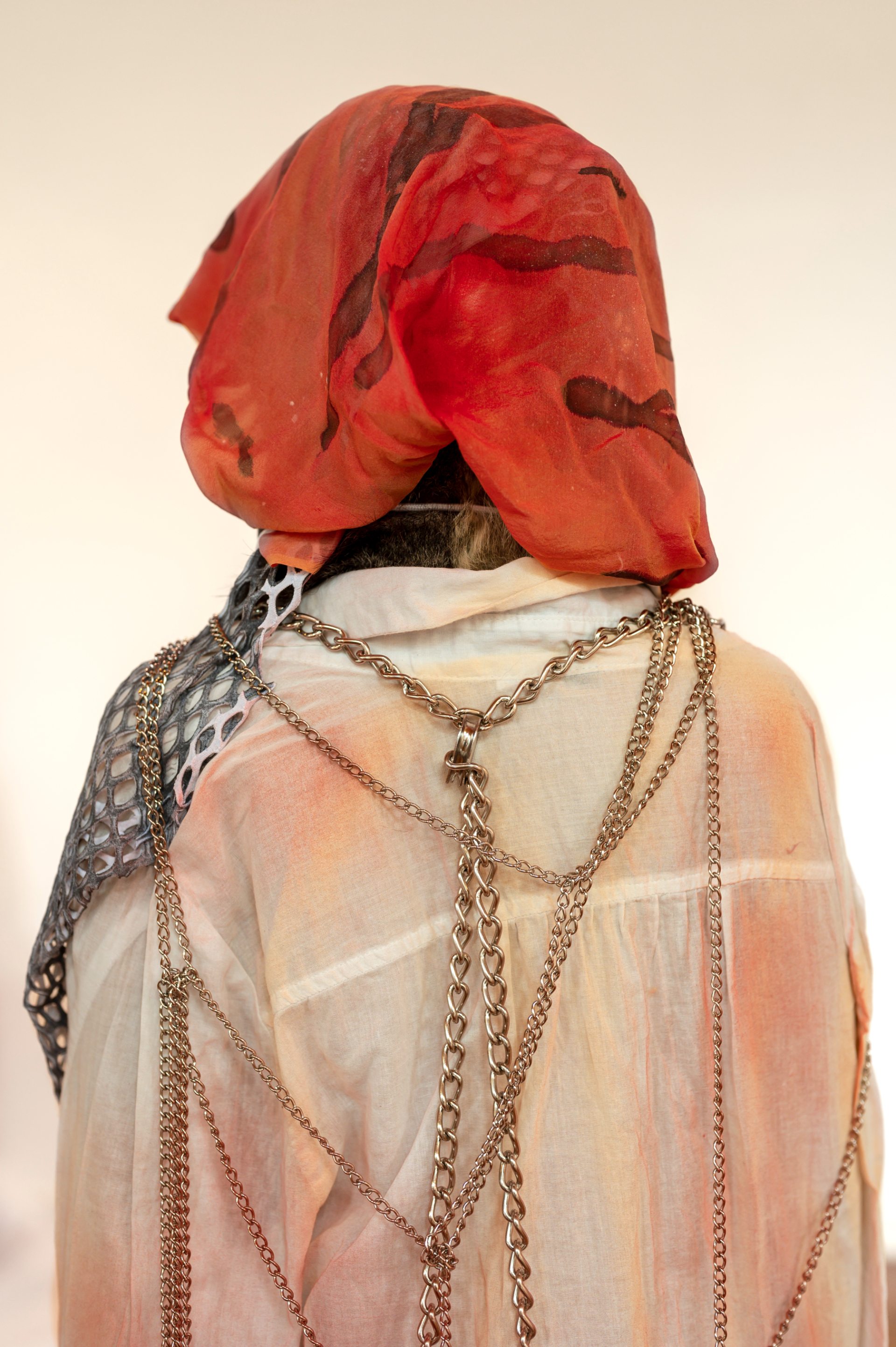
Unpredictable Liars II
Mysterious veiled figures linger in the exhibition space; they could be from past decades or maybe the distant future. Mumbling under their cloak, they tell the story of The Raft of the Medusa, an oratorio by the German composer Hans Werner Henze, the tale of the French frigate Meduse, which ran aground off the west coast of Africa in 1816. Some castaways saved themselves on a raft, but in the end only fifteen of the hundred and fifty mariners survived. Translated through sculpture, a story of desperation, existential crisis and cannibalism unfolds. While Hans Werner Henze’s oratorio originated against the backdrop of left-wing thought in the 1960s, Fürnkäs’ work situates itself very specifically in the context of contemporary economics, referencing isolation and the struggle for survival.
- Text excerpt by Marian Stindt
For a long time, the self-portrait was regarded as a mirror of historical and social changes with the individual self in the foreground, until it acquired new levels of meaning from the 1960s onwards through increased critical questioning of its topicality: Artists went to physical extremes, put themselves in the place of others in an attempt to explore the Other, and gender roles were questioned through masquerades or role-playing. The self-portrait is replaced by self-staging - in the digital age supposedly more than ever in ways of a selfie - or in other words, the self is the opposite. Under the title Selbstsicht: Porträt-Identitäten (Self-view: Portrait Identities), the Sprengel Museum Hannover is now dedicating an exhibition to the artistic questioning of the self-portrait genre from the 1960s to the present day.
Focusing on media art, Fürnkäs explores self-perception through a confrontation with aspects of isolation and denial in direct communication. In contrast to Fürnkäs, Öffler’s work seeks contact with other people on the Internet, which is refused after he has revealed his true “self” as an artist. All in all, the field of tension between the artistic creative process and self-observation is dealt with. Observing oneself is a subjective, an almost intimate factor. The conditions, premises and intentions are therefore always individual and variable.
- Text by Olga Nevzorova
The loop. The bow. In the hair, in the heart, a knot. Loops. Loops describe circles, chain links around the neck, caught in space. Figurines, fearlessly spinning pirouettes, create wheels and loops, and nothing is hopeless, the path simply leads in turns. In a circle, you meet again. And again. And again. We do not need mirrors, gates, doors or windows to change or to develop. A course, a racetrack, that we call our own. In the circle: leading, overtaking, falling back. Or to be overtaken, moving side by side, looking straight ahead. Turning to each other, and looking. The time you spend is not lost, nor used up. That which the linear cuts, comes again in the circle, remains faithful in constant change, just like you.
Isabella Fürnkäs works with a wide variety of media and materials; drawing or a form of painting based on a graphic approach is always there. She uses space as a canvas, throws things into it, awakens it to life: in the context of togetherness and confronting the other, she gives a subjectivity to the individual object; things play around with each other, gather together, dissolve again, become charged, and make the white cube resonate. Figurative sculptures continue as paintings on the walls, the painting continues in drawings, the drawing continues in the sculptures. Together they describe circular movements.
At ITALIC, Fürnkäs presents a compilation of graphic works from the last ten years; in a small format framed behind Plexiglas they face two mannequins facing each other. In Fürnkäs' work, the viewer regularly encounters human-like figures, magnificently draped in colors and patterns, nurtured by her examination of Japanese theater and craftsmanship; with the suggestion of growing from painting, they populate spaces. In a limp, melting state, they splash colorfully over the floor and become paintings again. In her work for ITALIC, she has withheld this color, speaking of "white" and "beige". The sculptures are delicately chiselled and decorated with fine fabrics. In a nonchalant gesture, the previous lavish colorfulness is outshone by a new elegance, its expression has become slightly darker. Where wistful moments were always visible in her work, there are now also motifs of pain. The dolls converse – in mutual silence – with the help of two media players on the tile wall. Endless.
Isabella Fürnkäs is based in Düsseldorf and Berlin. Two cities of many, it is less about restlessness than movement. Isabella Fürnkäs was born in Tokyo in 1988 and lived there until she was nineteen. Afterwards, in quick succession, she spent time in Zurich, Vienna, Cologne, Dusseldorf, Berlin, Paris, and studied at these places. She is a seeker. But more than that she is a finder, an inventor, and certainly a collector. She revisits these cities over and over again, commuting, in circular movements. The loop. The fact that this is part of her way of working and part of her work could be read biographically. Or the biography is a description of a decision, an idea of life, how one could lead it, and how she wants to lead hers. Endlessly. In a loop. In a circle. In an oval.
- Text by Andreas Reihse
Unpredictable Liars II, 2018-2019
Sound installation, mannequins, speakers, various materials and fabrics, dimensions variable
Exhibitions
Haverkampf Leistenschneider, Berlin (2025), The Moment, Berlin (2024), ACCCE, Berlin (2020), KINDL - Centre for Contemporary Art, Berlin (2020), Sprengel Museum, Hanover (2019), Kunstverein Göttingen (2019), Italic, Berlin (2018), KIT, Düsseldorf (2018)